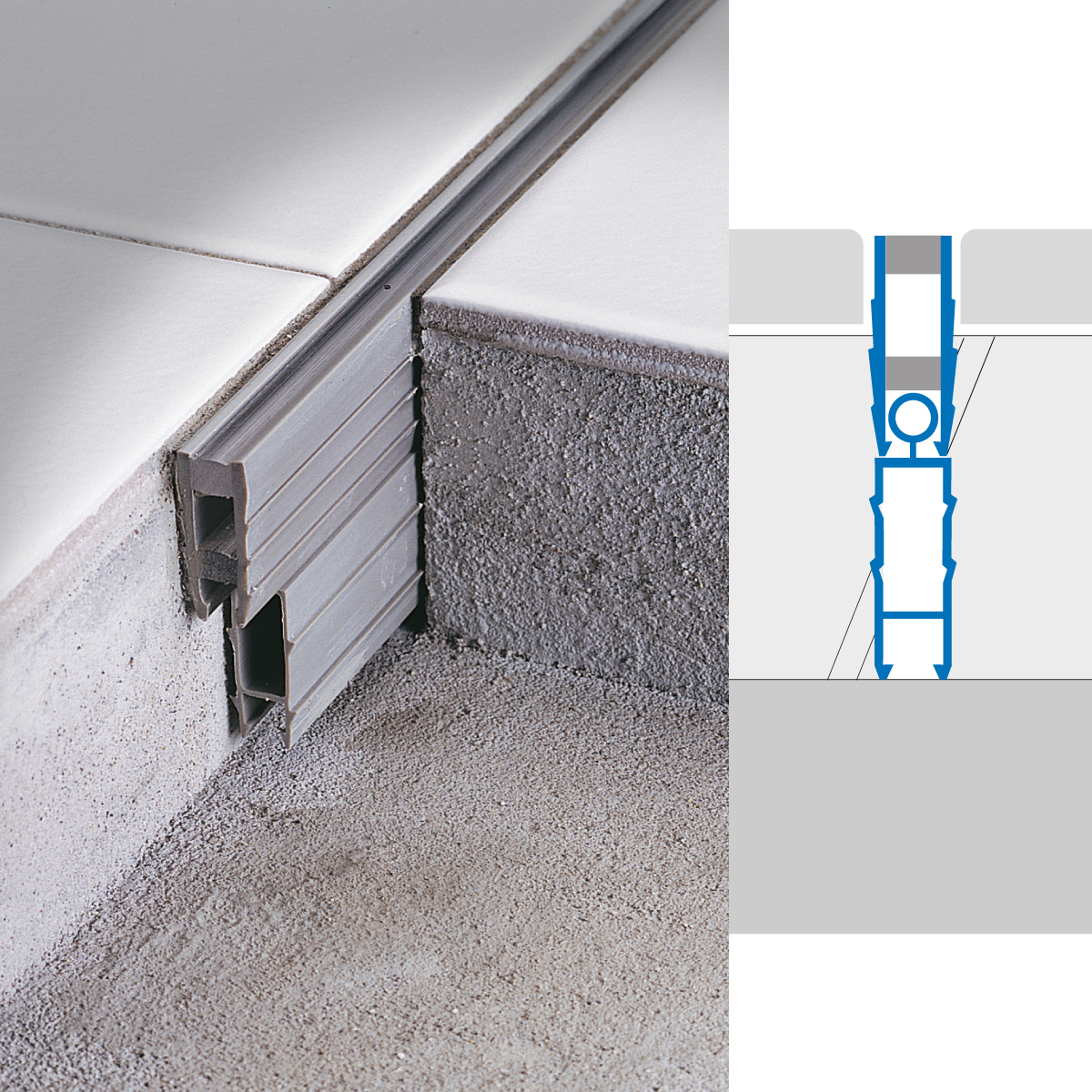Handling
-
Here are the steps recommended for installing Bordertec drip profiles for terraces:
1. Apply a waterproofing layer (liquid or sheet membrane) on the substrate; (take a look at the different types of waterproofing to find out more).
2. Adhere the profile with thinset, allowing about 1 cm between the profile and the front of the substrate.
3. In order to prevent water infiltration from entering under the profile, seal the perforated portion of the profile with Foiltec waterproofing strips.
4. Proceed with the tile installation:
- BBS/BCS profile: leave the space of one grout joint between the end of the Border profile and the first tile row. Subsequently seal the gap with a flexible sealant.
- BBO/BCO profile: leave the necessary space for the drainage holes and then seal with a permeable sealant. In corner joints or linear joints, leave about 2 cm between the joints to allow the aluminum to expand. (A cover profile will hide the gap).

Was this helpful you for solve?
-
Coflex CTL in aluminum and brass and Coflex CTM in brass can be ground on-site.

Was this helpful you for solve?
-
Brass can corrode immediately after installation when an acetic silicone is used, since it catalyzes the oxidation process. In order to avoid corrosion, we recommend using a neutral silicone. To take brass back to its original splendor, just use a normal metal polish.
Was this helpful you for solve?
-
Are there particular precautions to be taken when installing stainless steel profiles? The most important precaution when using stainless steel profiles is not using blades used for cutting iron, in order to prevent the iron residue from touching the steel, causing it to rust). For the same reason it’s very important to make sure that iron particles do not come into contact with steel profiles. Another precaution is that of leaving the adhesive protective film on the profile until the installation process is complete. Once the installation is complete, remove the film and clean the profile immediately to remove stucco or adhesive residue which could damage the profile or require cleaning with products aggressive to stainless steel.

Was this helpful you for solve?
-
The maximum distance between Uptec pedestals is 60cm. Therefore, when using tile lager than 60 x 60cm, we recommend placing a central pedestal in addition to the pedestals placed on the four corner of the tile.

Was this helpful you for solve?
-
We recommend applying a protective varnish or other products for the treatment of wood to the Stairtec FW before installation, given that it may be damaged by chemical substances present in normal tile adhesive.
Was this helpful you for solve?
-
To install the base of the Plano BF flush baseboard profile, you can use adhesive to attach it directly to the wall. Otherwise, you can attach the base track of the profile to the first layer of drywall by screwing it to the studs. Make sure to drill the base profile in the center, on the lower part of the profile. Then, proceed with the installation of the second layer of drywall and finally interlock the finish profile of the baseboard onto the base track.

Was this helpful you for solve?
-
Raised floors cannot withstand car passage. One of the advantages of this system is, in fact, the possibility of carrying out a dry tile installation without the use of adhesive and allowing for the future removal of the structure. This type of installation has optimal resistance to static loads (Uptec resistance to point loads = 14kN), but the components are not connected to each other, so the wheels of a vehicle which cause friction across the tile surface could collapse the structure.

Was this helpful you for solve?
-
Was this helpful you for solve?
-
Before installing the flooring it’s important to turn on the heat progressively from 10º to the maximum temperature for a couple of weeks, in order to dry the substrate completely before installing the flooring. Then place a perimeter joint, a joint on the threshold, and joints in areas where the passage of hot water and cold water intersect because the flooring is most subject to compression and contraction.
Was this helpful you for solve?
-
Movement joints are superficial joints (at the floor level), placed in correspondence with the underlying substrate. The superficial joint must be realized in exact correspondence with the joint of the substrate, even just a 5cm difference between the 2 joints can cause tile breakage or tenting (you may hear a “popping” sound). We recommend placing movement joints around areas with a maximum side length of 4 meters (16m2).

Was this helpful you for solve?